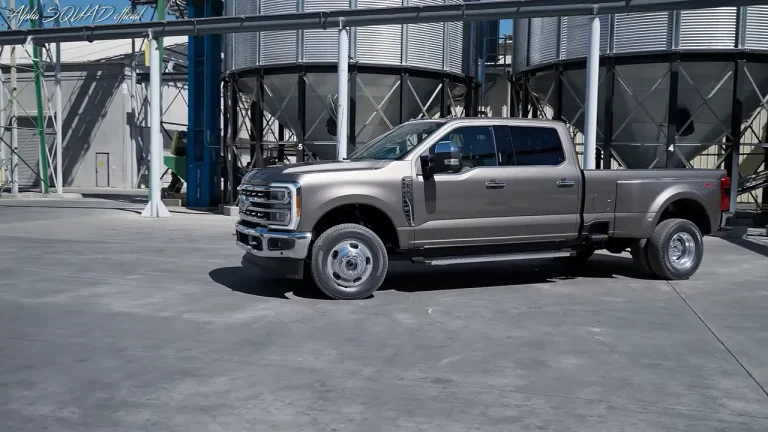Why Is My Steering Wheel Off Center While Driving Straight (Explanations)
Your steering wheel may be off-center while driving straight due to a misalignment in the front suspension or improper installation of new tires. This can cause uneven tire wear and affect vehicle handling and safety.
It’s important to have a professional mechanic inspect and fix the issue to ensure proper alignment and optimal driving performance. Driving with a misaligned steering wheel can also put unnecessary strain on other components of the vehicle, leading to further damage and costly repairs.
Avoiding the problem or attempting to fix it yourself can result in more severe issues down the line.
Understanding Steering Wheel Alignment
Have you ever noticed that your steering wheel is off-center while driving in a straight line? If so, you’re not alone. It’s a common issue that can be quite bothersome and even dangerous if left unattended. In this section, we will delve deeper into steering wheel alignment and why it’s crucial to have it properly adjusted.
Importance Of Proper Alignment
Having the correct steering wheel alignment is essential for several reasons. Here are some key points to remember:
- Safety: Proper alignment ensures that your vehicle is stable and safe to drive. When your steering wheel is correctly centered, it allows for optimal control and maneuverability, minimizing the risk of accidents.
- Tire wear: Misaligned wheels can cause uneven tire wear, resulting in premature tire replacement. By maintaining proper alignment, you extend the lifespan of your tires and save money in the long run.
- Fuel efficiency: Do you want to improve your vehicle’s fuel efficiency? Well, having properly aligned wheels can help with that too. Misaligned wheels can create additional drag, causing your engine to work harder and burn more fuel.
- Comfort: Driving with a misaligned steering wheel can be uncomfortable and tiring. It may lead to uneven pressure on your hands and arms, resulting in muscle strain or fatigue. Proper alignment ensures a more enjoyable driving experience.
Signs Of Misalignment
Now that we understand the importance of proper alignment let’s look at some signs that indicate your steering wheel may be off-center:
- Off-centered steering wheel: The most obvious sign is when your steering wheel is not perfectly centered while driving straight. If you find yourself constantly readjusting the wheel to stay in a straight line, it’s a clear indication of misalignment.
- Vehicle drift: Another sign is your vehicle drifting to one side without any input from you. This can be easily observed on a road with no slope or camber. If your vehicle tends to pull to the left or right, it’s time to check its alignment.
- Uneven tire wear: Keep an eye out for uneven tire wear patterns. If you notice more wear on the inside or outside edges of your tires, it’s likely due to misalignment. Examining your tires regularly can help you detect alignment issues early on.
- Steering wheel vibration: Misalignment can also lead to a vibrating steering wheel, especially at high speeds. If you feel a persistent vibration or shaking in your wheel, get your alignment checked as soon as possible.
Remember, these signs may also indicate other issues with your vehicle, so it’s important to consult a qualified mechanic to diagnose the root cause accurately.
By understanding the importance of proper alignment and recognizing the signs of misalignment, you can take the necessary steps to ensure your steering wheel is centered while driving straight. Regular alignments not only enhance your safety but also improve fuel efficiency and extend the lifespan of your tires.
Don’t ignore the warning signs; take action and enjoy a smoother, more comfortable ride.
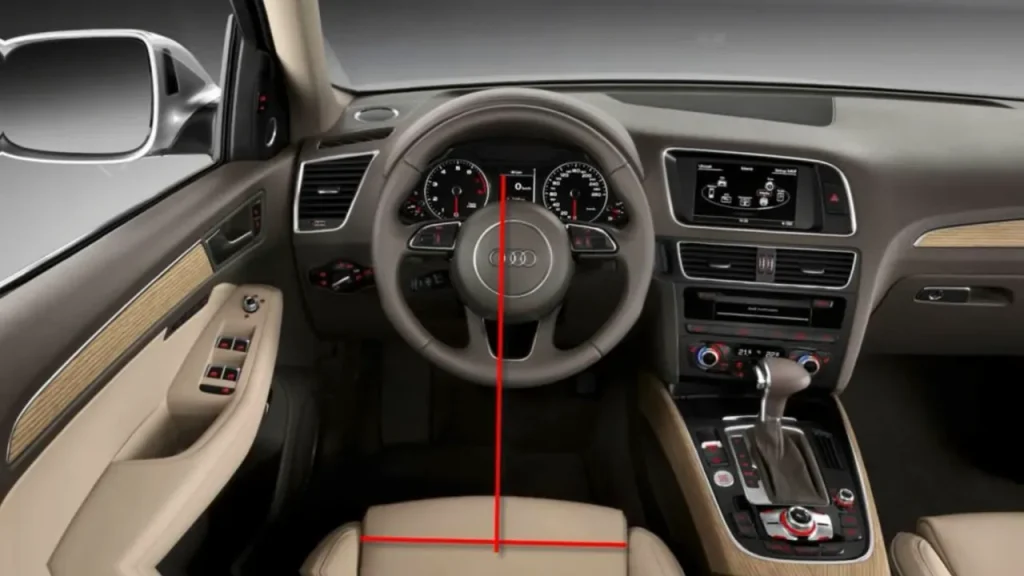
1. Tire Wear And Pressure Issues
Tire Wear And Pressure Issues
Have you ever noticed that your steering wheel is off center while driving straight? This can be a frustrating experience and can even affect your vehicle’s performance and safety. One possible reason for this issue is tire wear and pressure problems.
Let’s explore how uneven tire wear and tire pressure imbalances can lead to an off-center steering wheel.
Uneven Tire Wear As A Cause:
Uneven tire wear refers to tires that wear down at different rates or in different patterns. This can happen due to various reasons, such as improper wheel alignment, suspension problems, or even driving habits. Here are some key points to consider about uneven tire wear:
- Improper wheel alignment: When your wheels are not properly aligned, it can cause uneven tire wear. This misalignment can be a result of hitting potholes, curbs, or even regular wear and tear over time. When one tire wears down more than the others, it can contribute to an off-center steering wheel. It’s important to have your wheel alignment checked regularly to prevent this issue.
- Suspension problems: Faulty or worn-out suspension components can also cause uneven tire wear. When the suspension is not functioning correctly, it affects the way your tires make contact with the road. This can lead to uneven wear on the tires, which in turn can result in an off-center steering wheel. Regular suspension inspections and maintenance can help prevent this problem.
- Driving habits: Your driving habits can also contribute to uneven tire wear. Aggressive driving, sudden braking, and excessive cornering can wear down tires faster than normal. It’s essential to drive responsibly and avoid putting unnecessary stress on your tires, as this can cause uneven wear and affect your steering wheel alignment.
Tire Pressure Imbalance And Its Effects On Steering:
Another potential cause of an off-center steering wheel is tire pressure imbalance. When the air pressure in your tires is not properly balanced, it can affect your steering and cause the wheel to be off-center. Consider the following points:
- Overinflated tires: If your tires are overinflated, they will have less contact with the road surface. This reduces the tire’s ability to grip the road properly, leading to a lack of control and an off-center steering wheel. Regularly check your tire pressure and ensure it is within the manufacturer’s recommended range.
- Underinflated tires: On the other hand, if your tires are underinflated, they will have a larger contact area with the road. This can result in excessive tire sidewall flexing, causing the steering wheel to pull to one side. Regularly check your tire pressure and maintain proper inflation levels to prevent this issue.
- Differential pressure: Having different tire pressures on each wheel can also cause an off-center steering wheel. It is crucial to have consistent pressure across all tires to maintain proper alignment and ensure a centered steering wheel.
By understanding the impact of uneven tire wear and tire pressure imbalances, you can take proactive steps to prevent or address these issues. Regular tire rotations, wheel alignments, and maintaining proper tire pressure levels are key to ensuring a centered steering wheel and a safe driving experience.
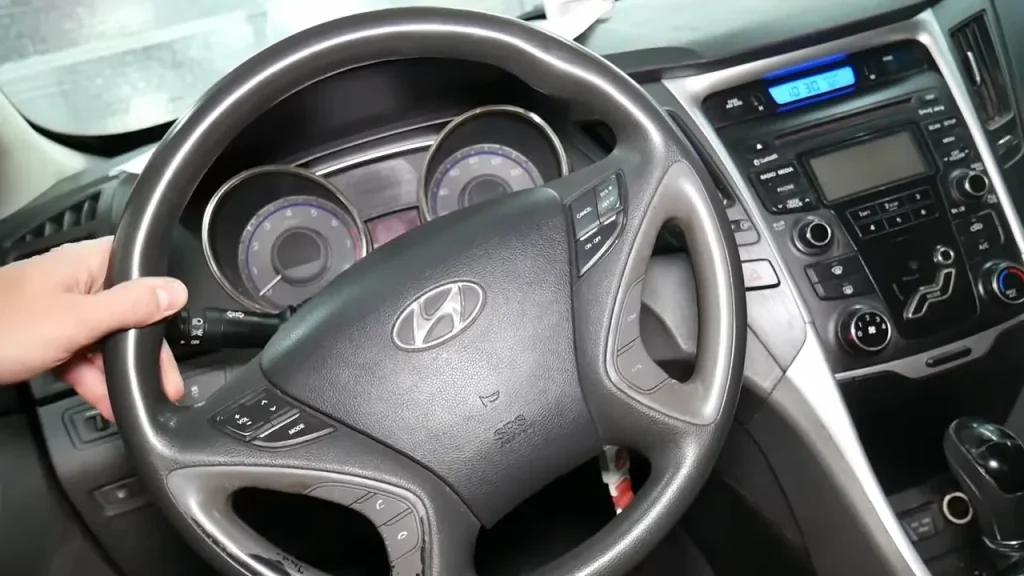
2. Suspension Problems
Worn-Out Suspension Components:
If you’ve noticed that your steering wheel is off center while driving straight, one possible reason could be worn-out suspension components. Here are some key points to understand about this issue:
- Worn-out suspension components can affect the alignment of your vehicle’s steering system, leading to an off-center steering wheel.
- Suspension components, such as ball joints, tie rods, control arms, and bushings, can wear out over time due to regular use, road conditions, and exposure to the elements.
- When these components become worn or damaged, they can cause uneven tire wear, decreased stability, and changes in the steering system’s geometry, resulting in an off-center steering wheel.
- In some cases, you may also experience symptoms such as a pulling sensation when driving straight or a noticeable difference in how your vehicle handles.
Impact On Steering Wheel Alignment:
Having an off-center steering wheel due to suspension problems can have several impacts on your vehicle’s steering wheel alignment. Here are the key points to consider:
- An off-center steering wheel can affect your ability to drive in a straight line comfortably and safely. It may require constant correction to keep the vehicle moving straight, leading to driver fatigue and an uncomfortable driving experience.
- In addition to the physical inconvenience, an off-center steering wheel can also indicate underlying issues with your vehicle’s suspension system. Ignoring these problems may lead to further damage and expensive repairs in the future.
- If you notice that your steering wheel is off center, it’s crucial to have your suspension components inspected by a qualified mechanic. They will be able to identify the specific component causing the issue and recommend the necessary repairs or replacements.
Now that you understand how worn-out suspension components can impact your steering wheel alignment, it’s important to address any issues promptly to ensure a safe and comfortable driving experience. Regular maintenance and inspections of your vehicle’s suspension system can help identify and mitigate problems before they worsen.
Remember that a properly aligned steering wheel not only improves your driving experience but also ensures the overall safety and well-being of your vehicle.

3. Wheel Alignment Errors During Maintenance
Wheel Alignment Errors During Maintenance
Improper wheel alignment can cause your steering wheel to be off center while driving straight. During maintenance procedures, there are common mistakes that can lead to wheel alignment errors. It’s important to understand the influence of these errors and how to avoid them.
Influence Of Improper Wheel Alignment
Improper wheel alignment can have several negative effects on your vehicle’s steering. Here are the key points to consider:
- Uneven tire wear: When your wheels are not properly aligned, it can cause uneven tire wear. This means that certain areas of the tires will experience more wear and tear than others. Not only does this reduce the lifespan of your tires, but it also affects the stability and handling of your vehicle.
- Pulling to one side: If you find that your vehicle pulls to one side while driving straight, it may be due to wheel alignment issues. When the alignment is off, uneven pressure is placed on the tires, causing the vehicle to veer to one side. This can be both frustrating and potentially dangerous, as it can affect your ability to maintain control of the vehicle.
- Steering wheel off center: One of the most obvious signs of improper wheel alignment is a steering wheel that is off center while driving straight. You may notice that you have to hold the wheel slightly to the left or right to keep the vehicle going straight. This misalignment can be caused by various factors, including improper adjustment of the tie rods or steering components.
Common Mistakes During Maintenance Procedures
During maintenance procedures, there are common mistakes that can lead to wheel alignment errors. Here are some important points to keep in mind:
- Improper torquing of lug nuts: When tires are removed and replaced, it’s crucial to ensure that the lug nuts are torqued to the manufacturer’s specifications. If the lug nuts are not tightened properly, it can lead to wheel misalignment.
- Neglecting suspension components: The condition of suspension components, such as control arms and bushings, can significantly impact wheel alignment. Neglecting to inspect and replace worn or damaged suspension parts can result in alignment issues.
- Incorrect adjustment of steering components: Wheel alignment involves adjusting various steering components, such as tie rods and the steering linkage. If these components are not adjusted correctly, it can result in improper wheel alignment.
- Diy alignment attempts: Attempting to align your wheels without the necessary expertise and equipment can lead to further alignment errors. Wheel alignment is a precise process that should be performed by trained professionals using specialized equipment.
By understanding the influence of improper wheel alignment and common mistakes made during maintenance procedures, you can take the necessary steps to ensure your steering wheel remains centered while driving straight. Regularly checking and maintaining proper wheel alignment can improve the performance, safety, and longevity of your vehicle.

4. Vehicle Collision Or Accidents
Impact On Steering System
When it comes to the alignment of your steering wheel, vehicle collisions or accidents can have a significant impact. The force exerted during a collision can easily throw off the alignment of the steering system, causing your steering wheel to be off center while driving straight.
Let’s take a closer look at the misalignment caused by collisions and its effects on the steering system.
Here are some key points to consider:
- Misalignment caused by collisions: A vehicle collision can cause the front suspension and steering components to become misaligned. The impact of the collision can shift the suspension components, affecting the steering geometry and resulting in an off-center steering wheel.
- Uneven tire wear: When the steering system is misaligned due to a collision, it can result in uneven tire wear. This is because the tires are not making proper contact with the road surface. As a result, you may notice excessive wear on one side of the tires, which can further contribute to steering issues and potentially decrease the lifespan of your tires.
- Irregular steering response: Misalignment caused by a collision can also lead to irregular steering response. You may experience a delay or lack of response when turning the steering wheel, or the vehicle may pull to one side while driving straight. These issues can affect your driving experience and overall safety on the road.
- Suspension damage: In addition to affecting the steering system, collisions can also cause damage to the suspension components. This damage can further exacerbate misalignment issues and impact the overall performance of your vehicle’s steering.
- Importance of professional inspection: If you have been involved in a collision or accident and notice that your steering wheel is off center while driving straight, it is crucial to have your vehicle inspected by a professional. A trained technician can assess the alignment of your steering system, identify any damage or misalignment, and make the necessary repairs to ensure proper steering function.
Vehicle collisions or accidents can have a detrimental impact on the alignment of your steering system, leading to an off-center steering wheel while driving straight. Understanding the effects of misalignment on the steering system can help you recognize the importance of timely inspection and necessary repairs to maintain optimal steering performance and safety on the road.
5. Steering Column Damage Or Misalignment
Signs Of Steering Column Damage
The steering column is a crucial part of your car’s steering system, connecting the steering wheel to the wheels. When the steering column is damaged or misaligned, it can cause your steering wheel to be off center while driving straight.
Here are some signs that may indicate steering column damage:
- Strange noises: If you hear clunking, clicking, or grinding noises when turning the steering wheel, it could be a sign of a damaged steering column.
- Difficulty turning: A damaged steering column can result in increased resistance when turning the steering wheel, making it harder to maneuver the vehicle.
- Steering wheel instability: If your steering wheel feels loose or wobbly while driving, it may be due to a misaligned or damaged steering column.
- Steering wheel misalignment: An obvious sign of steering column damage is when your steering wheel is visibly off center when driving straight.
- Steering wheel vibration: A damaged steering column can also cause vibrations in the steering wheel, especially at higher speeds.
How It Influences Steering Wheel Alignment
A damaged or misaligned steering column can have a direct impact on your steering wheel alignment. Here’s how:
- Loss of control: When the steering column is damaged, it can affect the proper functioning of the steering system, leading to a loss of control over your vehicle’s direction.
- Uneven tire wear: Misaligned steering column can result in uneven tire wear, compromising the lifespan and performance of your tires.
- Safety hazards: An off-center steering wheel can be a safety hazard as it may lead to unpredictable steering behavior and difficulty in maintaining a straight line while driving.
- Stress on other components: A damaged steering column can put additional stress on other parts of the steering system, such as the power steering pump and tie rods, causing further problems if left unresolved.
- Impaired handling: Any damage or misalignment in the steering column can affect the overall handling and responsiveness of your vehicle, making it less safe and enjoyable to drive.
Remember, it is crucial to address any steering column issues promptly to ensure your safety on the road. If you notice any signs of steering column damage, it is recommended to have your vehicle inspected by a qualified mechanic to diagnose and resolve the problem.
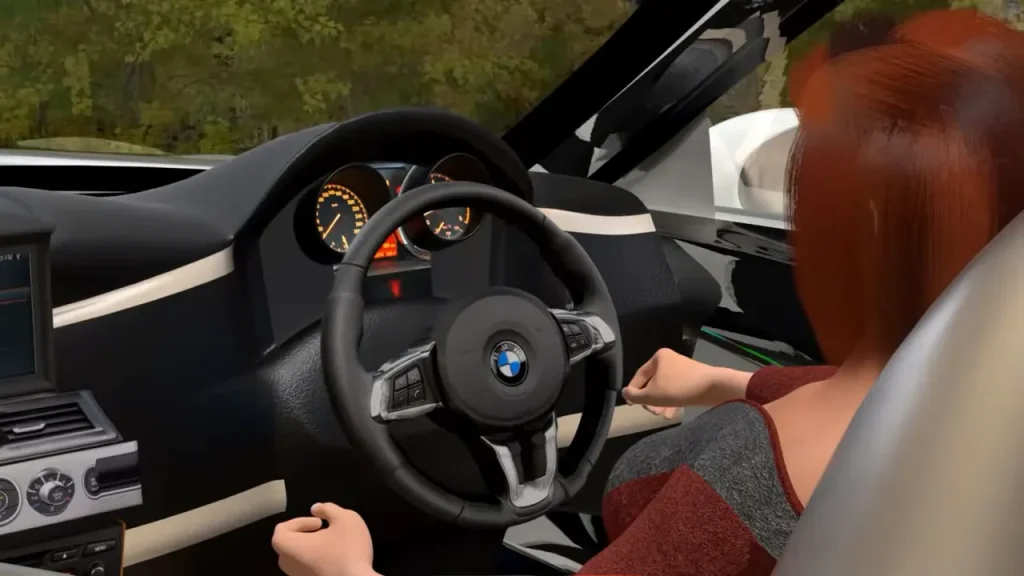
6. Steering Rack Or Box Issues
Common Problems With Steering Rack Or Box
One of the potential causes of an off-center steering wheel while driving straight is an issue with the steering rack or box. The steering rack, also known as the rack and pinion system, is responsible for converting the rotational motion of the steering wheel into the linear motion needed to turn the wheels.
When there are problems with the steering rack or box, it can lead to misalignment and result in the steering wheel being off-center. Here are some common problems to be aware of:
- Loose or worn components: Over time, the various components of the steering rack or box may become loose or worn out. This can cause excessive play in the system, leading to misalignment and an off-center steering wheel.
- Damaged or worn bushings: The steering rack or box is supported by bushings, which help to absorb vibrations and maintain stability. If these bushings become damaged or worn, it can affect the alignment of the steering wheel.
- Leaking power steering fluid: The steering rack relies on the power steering fluid to function properly. If there is a leak in the system, it can lead to decreased steering performance and misalignment of the steering wheel.
- Internal wear or damage: Inside the steering rack or box, there are gears, bearings, and other components that can wear out or become damaged over time. This can result in irregular movement and misalignment of the steering wheel.
Symptoms Of Misalignment
Identifying a misalignment issue with the steering rack or box is crucial in resolving the problem. Here are some common symptoms to watch out for:
- Off-center steering wheel: One of the key indicators of a steering rack or box issue is an off-center steering wheel while driving straight. If you find yourself constantly having to correct the position of the steering wheel to maintain a straight line, it could be a sign of misalignment.
- Uneven tire wear: Misalignment can cause uneven tire wear. Keep an eye out for excessive wear on either the inside or outside edges of your tires.
- Steering wheel vibration: When the steering rack or box is misaligned, it can lead to vibration or shaking in the steering wheel, particularly at higher speeds.
- Difficulty steering: If you’re experiencing increased resistance or difficulty when turning the steering wheel, it may be due to a problem with the steering rack or box.
- Fluid leakage: Leaking power steering fluid can indicate an issue with the steering rack or box. Keep an eye out for any signs of fluid puddles or stains under your vehicle.
Being aware of these symptoms can help you identify a potential steering rack or box issue. If you suspect a problem, it’s essential to have your vehicle inspected and repaired by a qualified professional. Ignoring steering issues can compromise your safety on the road and lead to further damage to your vehicle.
So, don’t hesitate to take action if you notice any of these signs of misalignment.
7. Alignment Sensor Or System Malfunction
Role Of Alignment Sensors Or Systems
Alignment sensors or systems play a crucial role in ensuring that your steering wheel is properly centered while driving straight. These sensors or systems help measure and maintain the correct alignment of your vehicle’s wheels. Here are some key points to understand their role:
- Alignment sensors: Modern vehicles are equipped with various sensors that monitor the position and movement of the wheels. These sensors provide crucial data to the vehicle’s computer system, allowing it to make necessary adjustments to keep the wheels aligned.
- Alignment systems: Alignment systems consist of mechanical components that work in conjunction with the sensors to adjust the alignment of the wheels. These components include control arms, tie rods, and suspension parts, which can be adjusted to correct any misalignment.
- Precision alignment: Alignment sensors and systems are designed to ensure precision alignment, which is essential for vehicle handling, tire wear, and overall safety. Even slight misalignment can cause your steering wheel to be off center while driving straight.
- Computerized alignment: Many modern vehicles have computerized alignment systems that automatically make adjustments based on information from the sensors. This allows for more accurate and immediate alignment corrections.
- Professional alignment services: It is recommended to have your alignment checked and corrected by a professional technician at regular intervals or when you notice any issues with your steering wheel. They have the necessary tools and expertise to diagnose and correct alignment sensor or system malfunctions.
Indicators Of Malfunction
While alignment sensors or systems are designed to be reliable, malfunctions can still occur. Here are some indicators that suggest a malfunction in your alignment sensor or system:
- Off-center steering wheel: One of the most obvious signs of an alignment sensor or system malfunction is an off-center steering wheel while driving straight. If your steering wheel is consistently turned to one side when driving in a straight line, it could indicate a misalignment issue.
- Steering instability: Another indicator of a malfunction is steering instability, where the vehicle might pull to one side or feel unstable while driving straight. This can be a result of incorrect alignment adjustments or faulty sensors.
- Uneven tire wear: Misalignment can cause uneven tire wear, with tires wearing out more quickly on one side compared to the other. Inspecting your tires regularly and noticing excessive wear on one side can suggest a problem with your alignment sensors or systems.
- Poor vehicle handling: If your vehicle feels difficult to steer or handle, it could be due to misaligned wheels. A malfunctioning alignment sensor or system can lead to poor vehicle handling characteristics.
- Warning lights: Some vehicles have warning lights on the dashboard that can indicate alignment sensor or system malfunctions. If you notice any warning lights related to the steering system or alignment, it is crucial to have it checked by a professional technician.
Remember, proper alignment is essential for safety and optimal vehicle performance. If you suspect any issues with your alignment sensors or systems, it is recommended to have them inspected and repaired by a qualified technician.
Conclusion
If you notice that your steering wheel is off center while driving straight, it is essential to address the issue promptly. This misalignment can occur due to various reasons, such as improper wheel alignment, worn-out suspension components, or even pothole damage.
Ignoring the problem can lead to tire wear, reduced fuel efficiency, and compromised vehicle handling and safety. To correct the off-center steering wheel, scheduling a wheel alignment is crucial. This process ensures that all four wheels are properly aligned according to manufacturer specifications.
Additionally, inspecting and replacing any worn suspension components can further improve the steering wheel alignment. Regular maintenance, such as avoiding potholes and checking tire pressures, can help prevent misalignment issues in the future. Remember, maintaining a properly aligned steering wheel not only enhances your driving experience but also prolongs the lifespan of your tires and other vehicle components.
So, if you notice a misaligned steering wheel, don’t delay in taking the necessary steps to rectify it. Your car will thank you in the long run.
- Why Are My Car Headlights Not Bright Enough? - May 9, 2024
- How Long Can You Drive With An EVAP Leak? - May 9, 2024
- What Does B Stand for in a Car? [Full Guide] - May 9, 2024
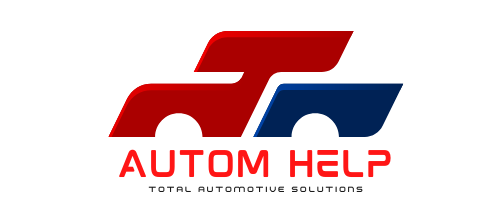
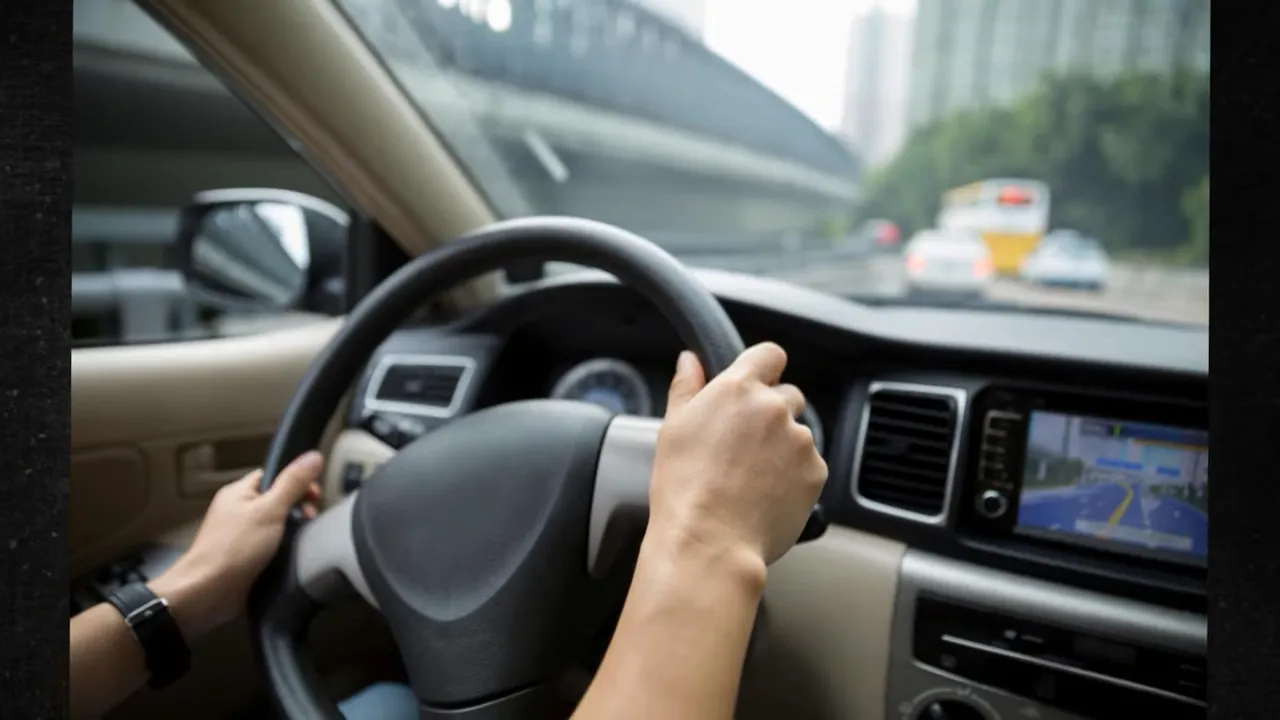
![Toyota Venza Years to Avoid [Guide for Car Buyers]](https://automhelp.com/wp-content/uploads/2023/07/This-is-BAD-BEWS-For-Toyota-Venza-Owners_000097353-768x432.webp)
![How to Avoid Getting Pulled Over With a Suspended License? [2024]](https://automhelp.com/wp-content/uploads/2023/12/USA-Driving-Test-Training-for-Indian-Students_000000780-768x432.webp)

